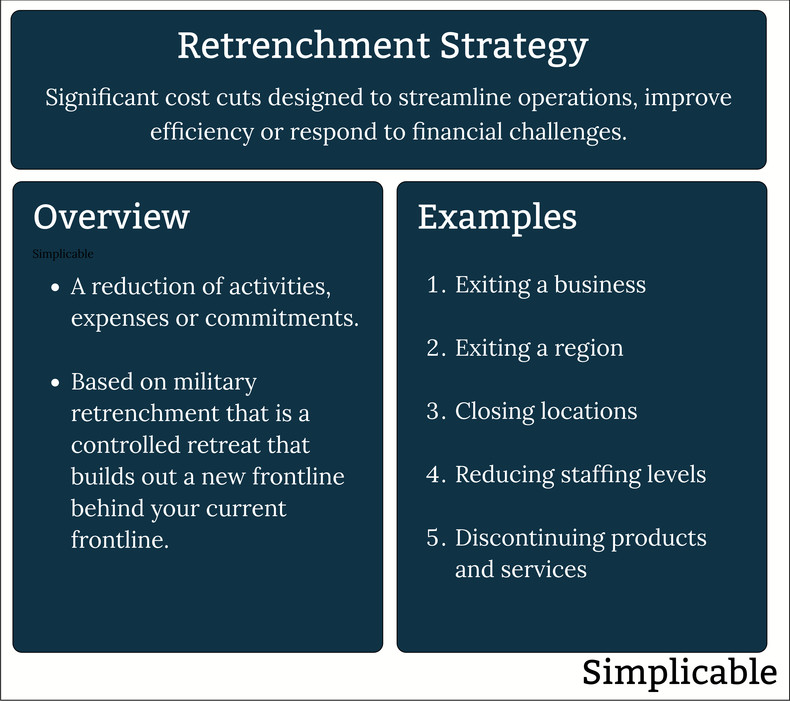
Selling Assets
Selling assets such as investments, facilities, machines or entire divisions of your organization. For example, an airline facing a liquidity crisis that sells its facilities at a key airport.Abandoning Markets
Abandoning a particular market location or segment. For example, an investment bank that closes its Tokyo office when markets crash and the business becomes unprofitable.Abandoning a Line of Business
Closing an entire line of business such as an insurance company that stops selling flood insurance after a major flood.Decreasing Production
Decreasing production of a product such as an automobile manufacturer that closes or idles a factory to respond to a fall in demand.Eliminating Redundancies
Layoffs in areas that are perceived as non-critical or low value are often referred to as redundancies. For example, a bank that has grown a large layer of middle-management who have abstract job titles not directly tied to revenue or critical operations may aggressively cut these positions when revenue declines.Downsizing
Downsizing, also known as layoffs, is the process of terminating employees through no fault of their own. This is often done in response to business conditions whereby a firm seeks to conserve resources to survive. In some cases, a firm seeks to downsize without exiting any markets or businesses. For example, a firm may require all departments to cut 10% of their staff without any changes to the responsibilities and goals of these departments.Outsourcing
The process of assigning a business function or process to an external partner, often to reduce costs. Outsourcing is only retrenchment when it is done urgently. For example, an IT company that suddenly sells its data centers and outsources to the company that purchases the data centers to generate cash in a crisis.Summary
A retrenchment is a controlled retreat to a new frontline. In the case of business, this indicates dramatic cost cuts that may involve exiting businesses and regions.
Notes
The term retrenchment is originally a military term where it refers to a line of defence behind your frontline. This is used to support a retreat or to defend against the collapse of your frontline. As such, the term is only used in the context of turnaround management.| Overview: Retrenchment Strategy | ||
Type | ||
Definition | The process of aggressively cutting costs in fundamental ways. | |
Related Concepts | ||






















